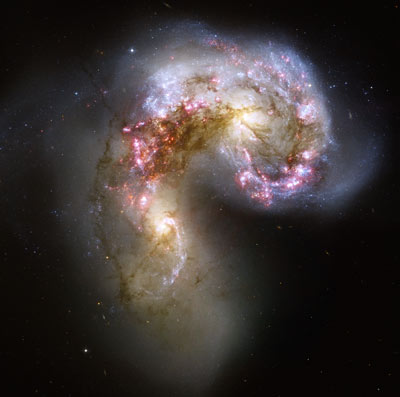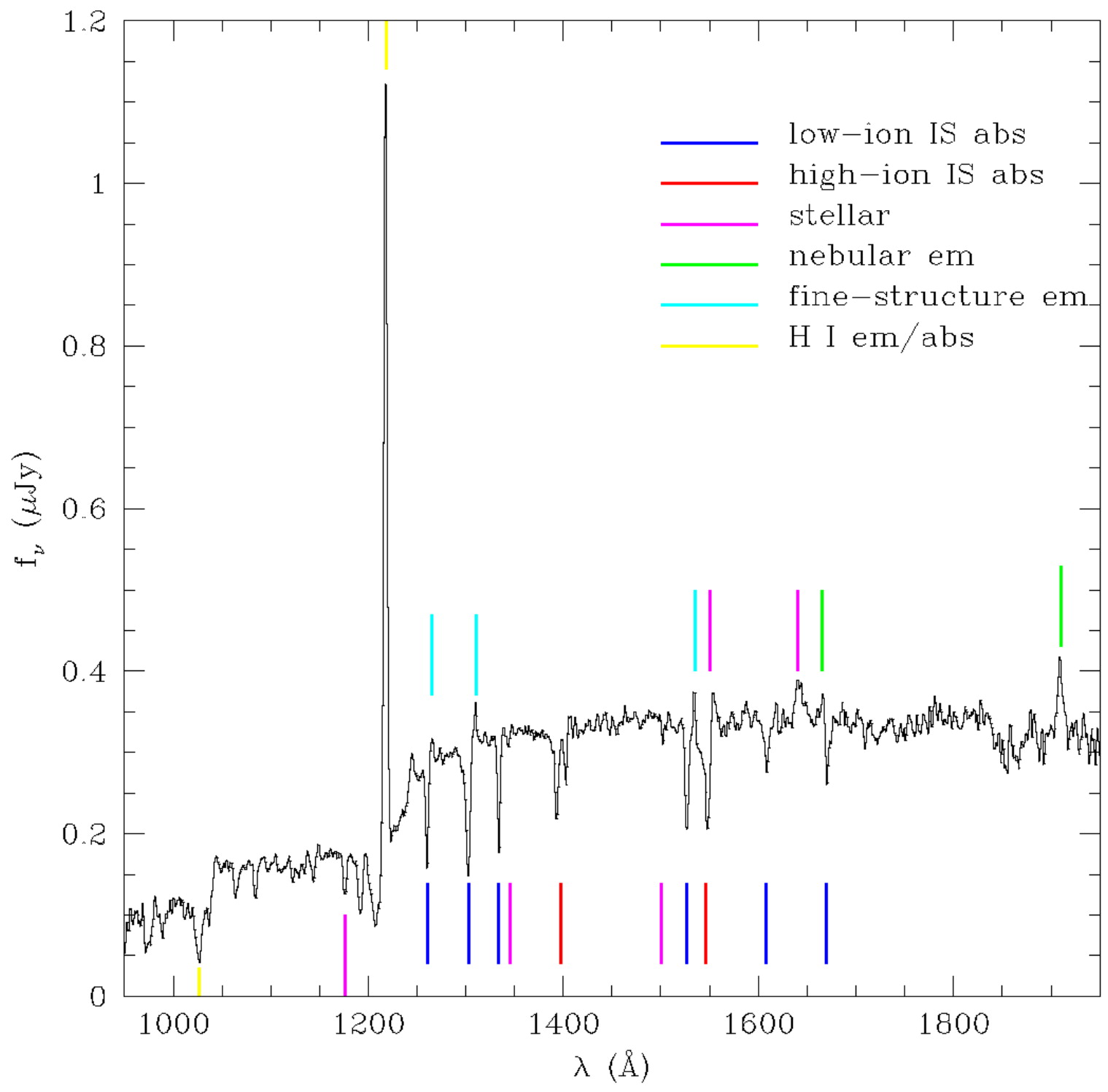Physics 607: Galaxies and Galaxy Dynamics
Spring 2022
|
|
Instructor
Andrew Baker
Serin W309
Phone: 848-445-8887
Email: ajbaker[at]physics.rutgers.edu
Office hours: TBD (via Zoom for at least the first two weeks)
Venue
TF3 (12:10-1:30pm):
online for at least the first four meetings (Jan 18, 21, 25, 28),
in-person in HLL-009 (Hill Center) at some point thereafter
|


|
Textbooks
There are two required textbooks for this course:
- The first (2020) edition of Cimatti, Fraternali, & Nipoti,
Introduction to Galaxy Formation and Evolution
(ISBN-13 9781107134768).
- The second (2008) edition of Binney & Tremaine,
Galactic Dynamics (ISBN-13 9780691130279).
Copies of both books should be available in the bookstore (look for
department 750, course 607, and section 01), whose website also offers an
e-book version of Cimatti, Fraternali, & Nipoti.
Overview
Here's a condensed version of the official course catalog listing:
Prerequisite: 750:507, Classical Mechanics
Properties of galaxies: photometry, structure, kinematics, gas content,
chemical evolution. Structure of the Milky Way. Equilibrium, stability, and
evolution of stellar systems. Dynamics and evolution of disk galaxies (spiral
patterns, bars, warps) and elliptical galaxies. Examples of chaotic
astrophysical systems.
In addition to learning about the observed properties of galaxies, and how
they evolve over cosmic time, we will also study the modern theory for how
galaxies form in the context of the 'hierarchical structure formation'
picture provided by the Cold Dark Matter theory. Topics that will be covered
include: structure formation in the Cold Dark Matter model; galaxy clustering
and bias; the Milky Way and the Local Group; demographics of nearby galaxies;
galaxies and their environment; interactions and mergers; galaxy evolution
over cosmic time; dynamics and stability of galactic disks; dynamics and
evolution of elliptical galaxies; black holes and Active Galactic Nuclei.
I plan to broaden this list of topics to include galaxies' relationships with
the circumgalactic medium (CGM) and the intergalactic medium (IGM). In
general, I will try to highlight subjects that are important to areas of
current research in extragalactic astrophysics and cosmology (e.g., galaxy
formation, the enrichment of the intergalactic medium, and the reionization of
the universe).
Schedule
Both the sequence of lectures and the assignment due dates are preliminary
at this point; I will update them as needed during the course of the semester.
I will include in the schedule the dates of any local talks that are
relevant to the subject matter of this course. Attendance is encouraged but
not required!
| LECTURE |
DATE |
TOPIC |
TEXT |
DUE |
| 1 |
Jan 18 |
course introduction; (p)review of the ISM |
|
|
| 2 |
Jan 21 |
cosmic distance ladder |
|
three adjectives |
| 3 |
Jan 25 |
|
|
|
| 4 |
Jan 28 |
|
|
HW1 |
| 5 |
Feb 1 |
|
|
|
| 6 |
Feb 4 |
|
|
HW2 |
| 7 |
Feb 8 |
|
|
|
| 8 |
Feb 11 |
|
|
HW3 |
| 9 |
Feb 15 |
|
|
individual galaxy slides |
| 10 |
Feb 18 |
|
|
HW4 |
| 11 |
Feb 22 |
|
|
|
| 12 |
Feb 25 |
|
|
HW5 |
| 13 |
Mar 1 |
|
|
|
| 14 |
Mar 4 |
|
|
HW6 |
| 15 |
Mar 8 |
|
|
|
| 16 |
Mar 11 |
|
|
HW7 |
| 17 |
Mar 22 |
|
|
|
| 18 |
Mar 25 |
|
|
HW8 |
| 19 |
Mar 29 |
|
|
|
| 20 |
Apr 1 |
|
|
HW9 |
| 21 |
Apr 5 |
|
|
|
| 22 |
Apr 8 |
|
|
HW10 |
| 23 |
Apr 12 |
|
|
|
| 24 |
Apr 15 |
|
|
HW11 |
| 25 |
Apr 19 |
|
|
|
| 26 |
Apr 22 |
|
|
HW12 |
| 27 |
Apr 26 |
|
|
|
| 28 |
Apr 29 |
|
|
HW13 |
Grading
Your course grade will be based on a weighted combination of four elements:
- homework assignments (50%)
- observing proposal (20%)
- summative project (20%)
- individual galaxy project (10%)
Homework assignments will generally be made available on Friday and submitted
(in class, or by emailed PDF before 5pm) the following Friday. They will
include three types of exercises: straightforward examples or extensions of
material discussed in lecture; more involved applications to areas of current
research, which may encompass some computational work; and true/false
questions that simulate the challenge of refereeing a journal paper.
The observing proposal will be for a telescope of your choice whose actual
proposal deadline falls between March 1 and April 30, 2022. Your proposal for
this class should be submitted to me two weeks before that actual
deadline (e.g., as specified below). You may choose one of the following
telescopes (italicized dates are currently estimated and will be
updated as needed), or a similar telescope with a deadline in the March/April
window:
The proposal should focus on observations of one or more galaxies, galaxy
groups, or galaxy clusters. Students who are pursuing research in astronomy
may discuss initial ideas with their research advisers (or with me), but
should otherwise execute the proposals by themselves; the two-week lead time
is meant to allow for revision of the proposal with your adviser as a
collaborator so that it can be submitted for real if you wish. Students who
are not pursuing research in astronomy are welcome to discuss ideas and
resources for building up the requisite background knowledge with me. Your
proposal's technical justification will not be graded in detail but should
be complete and worked through at a rough level (e.g., it would be advisable
not to propose an observation that would require 3000 hours of time on a
given telescope).
The summative project will either be a final exam (take-home, open-book, and
open-note), or a simulation of a Time Allocation Committee (TAC) review of
your observing proposals. I expect to decide on one of these formats shortly
after spring break, based on how things have been going in the first part of
the course.
The individual galaxy project will be to submit a four-slide PDF presentation
on an individual galaxy that will be assigned to you. The four slides should
present (i) the basic properties of the galaxy, and (ii) three interesting
results on the galaxy that have been published in the literature. Text and
figures are expected to be clear, appropriately referenced, and
self-explanatory. You can earn one point of extra credit (up to three over
the course of the semester) for each time you contribute a relevant insight
about your assigned galaxy to an in-class discussion or the Canvas chat room.
Other items
- Absences
I will have to miss two of our regularly scheduled classes. These will
either be taught by guest lecturers or rescheduled as extra classes at an
alternative time. If you need to miss a class for some reason, there will be
no direct penalty to your grade; however, since I will not be posting my full
notes to the course website, you will generally need to rely on your
classmates' notes to catch up. (I will aim to provide the equations
from my notes for each lecture, but without the context of the lecture these
are likely to be less useful.)
- Late assignments
You will begin the semester with a total of seven "grace days" that you may
"spend" to avoid being penalized for late work. If and when you have spent
all seven days (e.g., homework 3 was two days late and the individual galaxy
project was five days late), I will start docking points at a rate of 10% off
the top per day for each assignment.
- Collaboration policy
On the problem sets, you should first try every exercise yourself before
discussing it with others. If you get stuck (or finish and would like to
compare answers), you may discuss exercises with other students in the course
and/or me, but you should always write up your own solutions and indicate on
your solutions whom you collaborated with. You may consult books and
published papers, but not old solution sets from previous offerings of this
course or similar courses elsewhere.
- Students with disabilities
If you have a disability, let me know early in the semester so that we
can make the necessary arrangements for you to have a successful learning
experience. Please consult
this web page for more details.
Last updated February 18, 2022.

